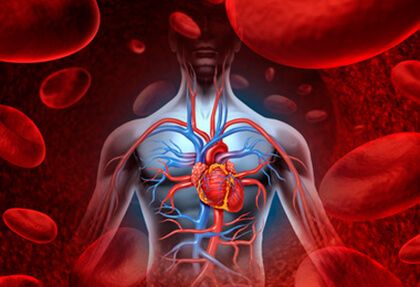After aortic valve replacement, focal fibrosis does not resolve, but diffuse fibrosis and cell hypertrophy regress. As expected, this regression comes with structural and functional improvement that suggest it is a dynamic process. Fibrosis can be measured and quantified with cardiovascular MR, which makes it a potential therapeutic objective.
 Left ventricular hypertrophy is a key process of many cardiomyopathies and results from cell hypertrophy and the expansion of extracellular matrix (interstitial fibrosis). This study looked at whether myocardial hypertrophy and interstitial fibrosis in the context of severe aortic stenosis are a dynamic process that can be reversed.
Left ventricular hypertrophy is a key process of many cardiomyopathies and results from cell hypertrophy and the expansion of extracellular matrix (interstitial fibrosis). This study looked at whether myocardial hypertrophy and interstitial fibrosis in the context of severe aortic stenosis are a dynamic process that can be reversed.
The study included 181 symptomatic patients with severe aortic stenosis (valve indexed area 0.4 ± 0.1 cm2/m2) scheduled for valve replacement. Patients were assessed with ECG and cardiovascular MR prior procedure (assessing volume, function, local and diffuse fibrosis), with bio markers (Pro BNP and ultrasensitive T troponin) and 6-minute walk test.
Read also: What’s New in the European Guidelines on Peripheral Arterial Disease.
MR was used to measure extracellular volume fraction, deriving matrix mass volume and cell volume. Biopsy ruled out other subjacent heart conditions and all measurements were repeated one year after valve replacement.
116 patients that did not require pacemaker, showed, at one year, a significant improvement of mean gradient (48±16 mm Hg to 12±6 mm Hg; p<0.001) and ventricular mass decreased a significant 19%. Focal fibrosis in MR with gadolinium saw no change but extracellular volume fraction increased thanks to a 16% reduction of matrix volume and a proportionally higher reduction of cell volume.
Read also: ACC 2018 | DEFINE-FLAIR Sub-Analysis: iFR More Comfortable, Faster, and Much Cheaper.
All these changes were followed by improved diastolic function, reduced Pro BNP levels, improved 6-minute walk test and functional class.
Conclusion
Diffuse fibrosis and cell hypertrophy regress after valve replacement, which brings on structural and functional improvement.
Original title: Reverse Myocardial Remodeling Following Valve Replacement in Patients with Aortic Stenosis.
Reference: Thomas A. Treibel et al. J Am Coll Cardiol 2018;71:860–71.
Get the latest scientific articles on interventional cardiologySubscribe to our weekly newsletter
We are interested in your opinion. Please, leave your comments, thoughts, questions, etc., below. They will be most welcome.





